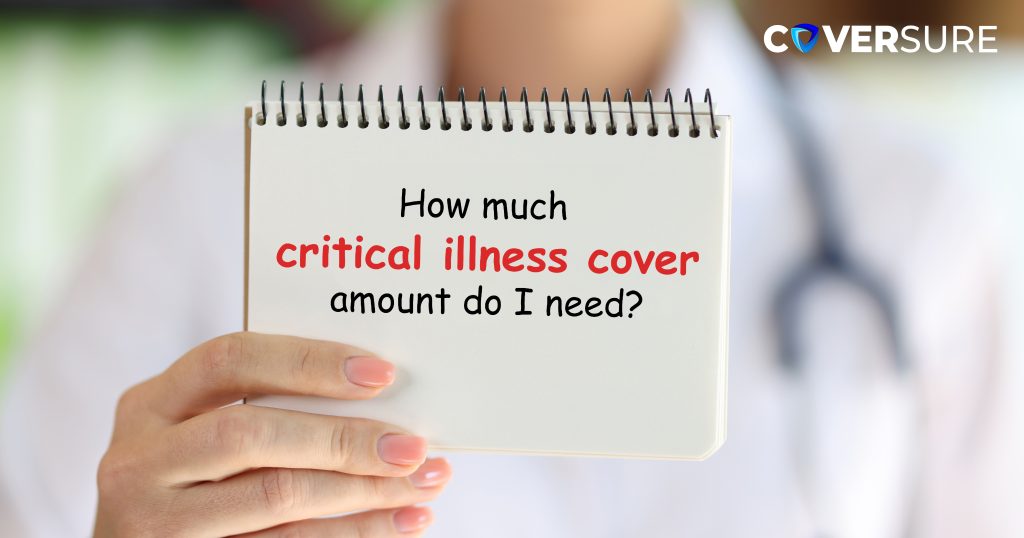Serious health conditions are rising fast, and the impact goes far beyond treatment costs. It can disrupt your income, drain your finances, and create long-term financial stress.
A critical illness policy offers a lump sum payout to help you manage treatment costs, replace lost income, and cover daily expenses. While critical illness insurance costs a little more than standard plans, it provides protection that regular health insurance simply doesn’t match.
Before you buy critical illness cover, it’s important to understand who needs it most, what it actually pays for, and how much coverage is enough to keep your finances secure.
Let’s dive in.
H2: What Is Critical Illness Cover in Health Insurance?
Critical illness cover in health insurance is a specialized plan that pays you a fixed lump sum if you are diagnosed with a serious illness covered under the policy.
A critical illness policy typically covers high-cost conditions such as cancer, heart attacks, kidney failure, stroke, and other life-threatening diseases. The focus is on providing immediate financial relief so you can concentrate on recovery instead of worrying about money.
While a critical illness cover costs more than basic health insurance, it offers peace of mind knowing you have funds ready when it matters most. This flexibility is why many families include critical illness insurance as part of their financial safety net.
H2: Critical Illness Cover vs. Regular Health Insurance
Many people assume that having a standard health insurance plan is enough to handle any major illness. But in reality, even a high sum insured may only cover part of the costs.
Regular health insurance is designed mainly to reimburse hospitalization and treatment expenses. It does not always cover non-medical costs, like income loss during recovery or repayment of existing loans. There may also be co-payments, sub-limits, and waiting periods, which can leave you with out-of-pocket expenses when you least expect them.
A critical illness policy works differently. It pays a one-time lump sum if you are diagnosed with a covered serious illness, such as cancer, heart attack, or kidney failure. This payout is not linked to hospital bills and can be used for any purpose allowed under the policy terms.
For example, you can use it to fund specialized treatment, manage daily expenses, or maintain financial stability if you are unable to work.
Regular health insurance and critical illness insurance are not interchangeable; each type plays a unique role in a complete protection strategy. Having both policies ensures you have coverage for medical bills and additional financial support to handle other impacts of a critical illness diagnosis.
H2: Factors That Decide How Much Critical Illness Cover You Need
Choosing the right critical illness cover amount isn’t just about picking a random figure. Several factors should guide your decision:
- Your Age and Family Health History
People with a family background of serious diseases such as cancer or heart issues, or those in higher age groups, often face increased chances of developing a critical illness. This often means you need a larger cover amount to protect your finances. - Lifestyle Habits
Smoking, lack of exercise, and high stress increase the chances of developing serious illnesses. If you have lifestyle-related risks, a higher critical illness policy sum insured makes sense. - Current Health Insurance Limits
Evaluate how much your existing mediclaim or employer health insurance pays. A critical illness insurance plan should fill any gap between this limit and the actual costs of treatment and recovery. - Ongoing EMIs and Financial Obligations
If you have home loans, car loans, or children’s education expenses, consider how you would pay these bills if your income stopped due to a critical illness. Your cover should be enough to maintain your family’s lifestyle without financial stress.
When you look closely at these considerations, you’ll be able to decide on a critical illness cover amount that matches your personal needs and financial goals.
H3: The smarter way to figure critical illness cover:
Instead of manually estimating all these variables, use the coverage risk calculator to get a data-backed recommendation in minutes.
The calculator asks practical, relevant questions around:
- Your age and income
- Family health history
- Existing health insurance cover
- Ongoing EMIs or loans
- Number of financial dependents
- Expected lifestyle costs during recovery
Based on your inputs, it calculates a recommended critical illness cover that aligns with your unique risk and financial situation and gives you a clear, personalized number to work with.
Output preview:
H2: Common Expenses Critical Illness Insurance Covers
Depending on your insurer, the lump sum payout can be used for expenses related to many conditions, such as:
- Cancer Treatments
Including chemotherapy, radiation therapy, and surgeries like breast cancer surgery. - Major Heart Procedures
Bypass surgery, angioplasty, and heart surgery costs. - Organ Transplants
Expenses related to a liver transplant or lung transplant, which often exceed the limits of regular health plans. - Kidney Failure Treatment
Dialysis sessions, medications, and transplant preparation. - Stroke Rehabilitation
Long-term physiotherapy and recovery support. - Ongoing Household and Living Costs
Daily expenses, EMIs, or education costs if your income stops during treatment.
Critical illness insurance can help you stay financially stable while you recover. Since every policy lists exactly which illnesses are covered, always read the policy terms carefully before you choose your critical illness cover.
H2: Calculating the Ideal Sum Insured
The most accurate way to calculate your ideal critical illness cover is to use the coverage risk calculator. It replaces guesswork with a data-backed recommendation in under 4 minutes.
What the Calculator asks:
You’ll answer a short set of questions grouped into four areas:
- Health Profile: Your age, gender, and key health indicators
- Lifestyle: Habits like smoking, alcohol, stress, and activity level
- Medical History: Personal and family history of major illnesses
- Financial Details: Income, dependents, existing insurance, EMIs, and savings
What you will get:
Once completed, the tool gives you:
- A personalized risk score
- A recommended coverage amount based on your risk tier
- A suggested critical illness insurance sum insured tailored to your income, liabilities, and recovery period needs
It’s fast, practical, and far more accurate than applying a flat multiple to your salary. If you’re serious about protecting your finances from the impact of a serious illness, the calculator gives you a concrete number to act on.
H2: Examples of Cover Amounts for Different Life Stages
Your ideal critical illness cover depends on your age, income, and financial responsibilities. Here are typical ranges to consider:
- Young Professionals (25–35 Years)
Recommended Cover: ₹10–15 lakhs
Why: Fewer liabilities but important for income protection if diagnosed early. - Mid-Career Individuals (35–50 Years)
Recommended Cover: ₹20–30 lakhs
Why: Higher earnings, bigger loans, and family dependence increase financial risk. - Senior Citizens (55+ Years)
Recommended Cover: ₹15–20 lakhs
Why: Greater health risks and fewer income sources, though cover limits may apply.
Use these examples as a guide to prevent last minute surprises.
H2: Common Mistakes When Choosing Critical Illness Policy Amount
Many people underestimate what it takes to stay financially stable during recovery. Here are the most frequent and costly mistakes to avoid:
- Underestimating Total Expenses
Focusing only on hospital bills ignores income loss, rehabilitation, and lifestyle changes that a critical illness often brings. - Choosing the Minimum Sum Insured
Selecting the lowest possible cover to save on premiums can backfire if your treatment extends over months or you need specialist care. The cheapest critical illness insurance rarely offers enough protection. - Not Reviewing Cover as Your Life Changes
Income increases, bigger liabilities, or new dependents mean your critical illness policy should be reviewed every few years. A stagnant sum insured won’t match rising costs. - Assuming One Policy Fits All Needs
Coverage varies across insurers. Each critical illness health insurance plan defines illnesses, payout conditions, and exclusions differently. Always check which illnesses are included and if partial pay-outs apply. - Ignoring the Impact of EMIs and Liabilities
If you have large loans or EMIs, make sure your critical illness cover is enough to keep repayments on track without using savings or liquidating investments.
Avoiding these mistakes ensures your critical illness insurance truly acts as a safety net, not just another document.
H2: Final Takeaway
A well-chosen critical illness cover can mean the difference between financial stability and years of stress after a serious diagnosis.
Before you decide how much critical illness insurance to buy, take time to assess your income, liabilities, family needs, and existing health cover.
If you’re unsure how much critical illness health insurance you need, use the CoverSure Risk Calculator for a clear, personalized coverage estimate:





